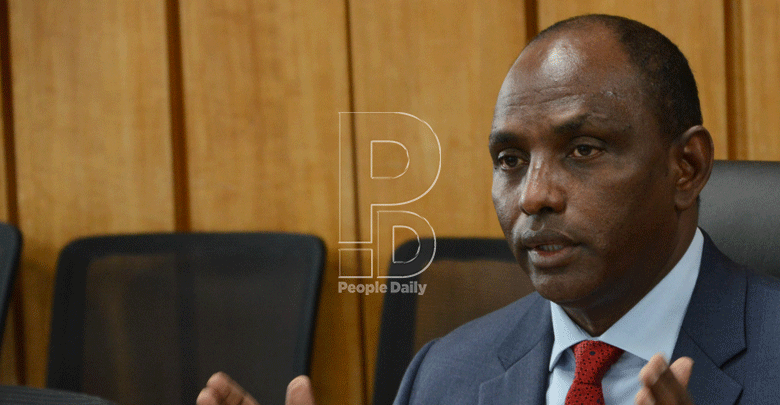Experts say fixing gaps in PPPs vital for development

In 2017, the World Bank Group released a benchmark on Public-Private Partnerships (PPPs) Procurement aimed at assessing the capacity of 82 countries including Kenya in preparing, procuring and managing such partnerships.
The assessment was based on the prevailing policy, legal and regulatory framework together with the accepted good practice.
While Kenya does well in having robust PPPs Framework, largely supported by the many projects in the pipeline, it lags behind when it comes to the number of deals made.
By definition, PPP is a long-term agreement between the government and private sector to provide basic services on its behalf.
In some arrangements the private entity bears significant risk and management responsibility and remuneration is linked to performance. In others, this risk is split between the private entity and government.
“Infrastructure ownership solely rests on the government. They give the private entity not only the power of operations and maintenance of the assets, but also the power to manage and finance the required investment,” says Annamari Uys, director PPP advisory Turner and Townsend during a webinar organised by the Architectural Association of Kenya (AAK) on the future of PPPs in the country.
She adds that the use of the government asset by the private entity usually lasts as per the duration of the contract, usually between 20 and 30 years so that the private party can fully amortise major initial investments.
“The government asset is under the control of the private entity and all rights to the assets revert to government at the end of PPP agreement.
A private entity may be given the asset for rehabilitation. In addition, it takes the risks for design, development, finance, operations as well as the maintenance of the government asset.
They are focused on output, which is the delivery of a service asset in accordance to the contract,” she continues.
The World Bank estimates that Kenya needs to invest at least $4 billion (Sh455 billion) per annum in infrastructure to meet the Sustainable Development Goals.
If the country wants to have productive infrastructure, it needs to think where the funding of the projects will come from.
The recent infrastructure expansion has also contributed to an increase in debt load, which has risen from 48.6 per cent of GDP at the end of 2015 to 68 per cent at the end of 2020.
Spurring growth
“The increase accounts largely to infrastructural spends and the shocks of the pandemic. About half of the debt is external and on concessional terms.
Mobilisation of private capital is essential for growth and economic development of the economy since debt stunts the economic growth of a country,” says Edgar Kamara, head of project structuring PPP Unit, the National Treasury.
Since the government can’t fulfill this need, PPPs are the way forward in filling the gap. Various projects prove that Kenya has been successful in as far as the creation of infrastructure projects using PPPs is concerned.
For instance, the Port of Mombasa Grain Terminal constructed in 1998 and in 1999 and the Malindi Water Utility built on a five-year management contract. In 1998, PPP was used to build the Jomo Kenyatta International Airport Cargo Terminal (JKIA Cargo).
Upcoming projects include the bus rapid transport project, Mombasa industrial park, Nairobi-Nakuru Mau summit highway. The Lamu port and Maragua dam for water supply are in the project preparation stage.
“The pros of using a PPP are that when projects are run correctly and in the right environment it can really be a win-win for both the government and the private sector.
It also gives the government access to funds they might not have to develop projects, giving investment opportunities on large infrastructure projects.
It increases funding for infrastructure as costs spread over time and there is increased innovation due to access to technology and human resource,” notes Uys.
When the expertise lies heavily on the private sector it might be a con to the government as it will end up relying on the private sector for almost everything.
“The cost of performance monitoring is also high and there are potential long term fiscal implications. From the outside, PPP procurement methodology is complex, but once you understand how and why things are done then things are much easier,” she continues.
In Kenya, the government has created necessary environment for private sector participation in its infrastructure development to spur economic growth.
They were created in 2011 under the PPP policy statement and later on revised as the Public Private Partnership Act.
The act stipulates that the government retains total strategic control on the service and is mandated to secure new infrastructure, which will eventually become its property by the end of the contract.
It also allocated projects and performance risks to the party that can best mitigate or manage it.
“The Act was passed to enable participation of the private sector in financing, construction, development, operation and maintenance of government projects through concessions or other contractual arrangements.
The Act also establishes institutions that will regulate, monitor and supervise the implementation of project agreements such as the private partnership committee, PPP unit and PPP nodes,” explains Edgar.
Last year, the government came up with the PPP Bill, which aims at creating solutions to the current institutional and governance challenges that have plagued the successful implementation of PPPs since its creation.
“The approval process has now been reduced to three stages from nine. Currently, only the concept, feasibility study and negotiation are approved and this has compressed timelines from concept to commercial clause when it comes to projects,” adds Edgar.
Additionally, the node structure has been dismantled. In the old disposition, each contracting regime had a node and had to have a project appraisal for the decision-making team which made it too distributed.
“With the changes in the act, there is now more consideration of local content. Public participation is going to be a requirement.
Most projects haven’t worked out well because there haven’t been enough stakeholders engagement and public participation,” says Claire Barclay, Partner, Pinset Masons, an international law firm specialising in the energy, infrastructure, financial services, real estate and advanced manufacturing and technology sector.
New directorate
She adds that this improvement has brought certainty in the process as well.
“While the 2013 Act had references to dialogue, it didn’t have much meet-ups with relevant stakeholders, but now we have a clearer picture on the conventional procurement versus unsolicited bids, and how those are procured and under what circumstances versus direct procurement which are positive changes,” she observes.
It also clear that the success of a PPP programme is the institutional arrangements that support it.
“There is no longer a PPP unit but a directorate whose powers and functions are clear. While there are pipeline projects at country level, they should also look for pipelines at county levels since they have been opened up under the new revised act,” she continues.
There are various challenges facing PPPs in the country. For instance, restricted recourse financing for PPP and also a greater risk involved when carrying out some projects.
There is also lack of human resource to effectively apply PPPs and incompetent service providers in the country. However, many factors make a foreign PPP project attractive.
“As a financier, the risks and return on investment makes it attractive. The other thing is the possibility of private sector being able to share the risk with government.
The private sector could make the same investment; sadly, they have to take all that risk by themselves.
When they share the risk with government, they know there are certain aspects they don’t have to think about,” notes Isaac Kahara, county head east Africa, UK Export Finance
Another factor is bankability, which is linked to the return in the long term.















